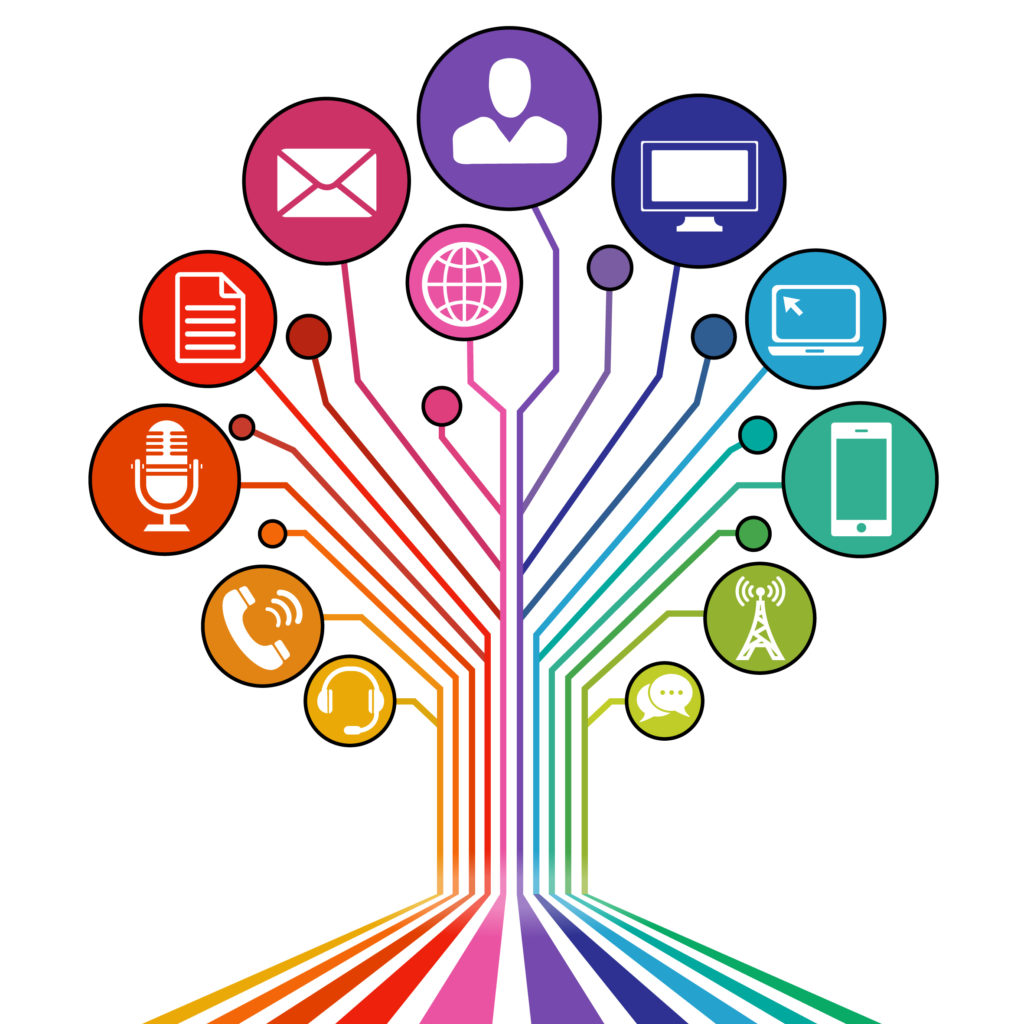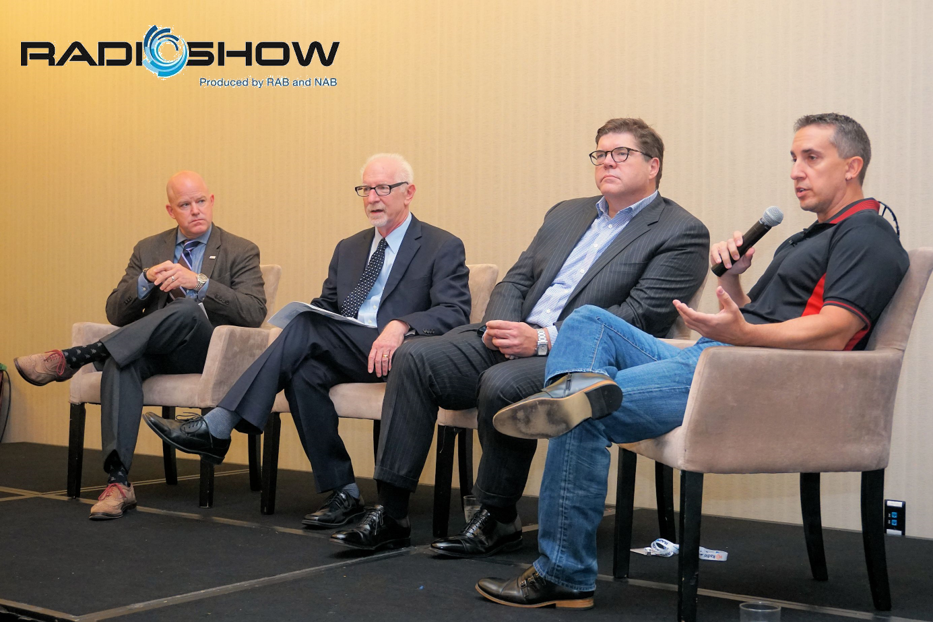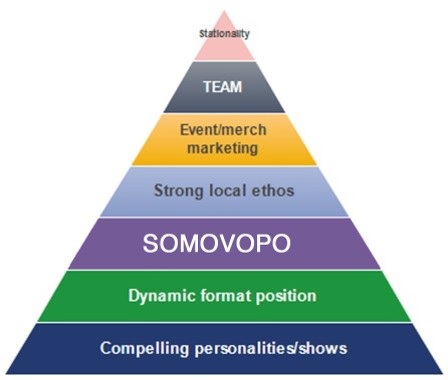
If it feels like “DJ Week” on the blog, that’s not a misnomer. In fact, we should be talking about personalities when we’re discussing radio’s long-term viability as a powerful medium. As the Nielsen September PPM reports come pouring in, radio continues to have the wrong conversations about what matters.
This is an industry whose inward perspective takes it further away from the true competitive realities of the last decade. Yet, whether it’s Country station A versus Country station B in the latest race to determine who has more listeners 6+ or sales reps fighting it out for “radio dollars,” the industry’s insular point of view takes it further away from the larger competitive fray.
At the connected car session in Nashville moderated by NAB CTO Sam Matheny, Commonwealth Broadcasting’s Steve Newberry, Ford’s Scott Burnell, and I reached some of the same conclusions about radio’s challenge in the dash. It is true that technology is creating a new in-car media environment. But whether we’re talking Apple CarPlay or Ford’s SmartDeviceLink, the need for radio to invest in its programming content – specifically local roots and hometown personalities – has never been more important. If anyone’s looking for a silver bullet in cars, it’s been right under our noses all along.

It may be more difficult and expensive to grow, nurture, and retain great personalities, but that’s the magic elixir that can keep radio ahead of the game, whether it’s in the local ratings, in the cubicles of agencies, or in the hearts and minds of listeners. The perfect, well-tested 300-song safe list meticulously scheduled with meter-friendly stopsets is no better than a consumer’s array of Spotify playlists. And for many consumers, the ability to create playlists without erectile dysfunction or loan consolidation commercials is proving to be the superior option.
If you hop into a car manufactured within the last couple years, your choice of audio entertainment has exploded. And while radio still remains a great option, so is everything else the automakers are baking into the dashboard. Newberry and I “debated” whether radio is now on a level playing field in the car. My point is that after years of primacy in the dash, broadcast radio now has to share the stage with everything – satellite radio, apps, podcasts, and yes, even talking books. Steve noted the playing field in the car is still far from level because radio continues to enjoy an out-sized lead in reach, familiarity, and usage.
We’re both right. Because while broadcast radio may have infinitely more in-car competition than ever before, it continues to hold an advantage in many of the key variables – local, habit, choice, and ease of use.
But not if broadcasters continue to look at the battleground through the traditional Radio vs. Radio lens. In our panel, we received a question wondering whether this challenge to radio is any different than the historic competitive issues the medium has faced in the past – like television or 8-track players. The fact this query is still being posed in 2016 says something about the industry’s reticence to face the music – or at least the dashboard.
Salon jumped all over this issue earlier in the week when it equated CBS divesting itself of its radio business with the demise of the entire industry. Journalist Angelo Young posed this ominous headline: “Signing off: CBS is getting out of the radio business — is this finally the end of the medium?” In the article, Young quotes Scott Burnell and Gordon Borrell, attributing some of radio’s problems to hubris, arrogance, and an inability to grasp dashboard reality.
The truth is somewhere in the middle. And at our Radio Show panel, Burnell, Newberry, and I agreed – strongly – that an investment in proprietary local content and great personality is essential to radio’s survival. It’s easy to get caught up in a conversation about tech when considering the connected car – head units, the human machine interface, and Android Auto.
And yet, radio’s ultimate place in the new hierarchy of audio boils down to whether its content continues to play to its strengths. While in Nashville at the Radio Show and in Phoenix at PRPD, I had the occasion to speak to a wide array of broadcasters from the commercial to the public sectors. In the process, a new pyramid we developed last year – and continue to modify – came up in conversation. That’s because its title takes a different point of view for the industry, compelling managers, programmers, and sellers to view the medium through a Radio versus Everybody perspective.
That’s the reality for radio on both the home front and in the workplace. And as consumers trade in their old cars for shiny new ones, the dashboard will become that new battleground that will test radio’s focus and ultimate value to drivers and passengers.
 In this new construct, a unique format surely matters, but plays a back seat role to the power of compelling personalities, teams, and shows. Formats can be usurped – by direct competitors, ankle-biting translators, personal playlists, and streaming pureplays. A new sign-on Friday afternoon at 5 featuring a streamlined playlist and 10,000 songs commercial-free can upend a heritage radio station that fails to invest in the proprietary foundation of this pyramid. These building blocks provides stability, uniqueness, and a sense of cume-urgency.
In this new construct, a unique format surely matters, but plays a back seat role to the power of compelling personalities, teams, and shows. Formats can be usurped – by direct competitors, ankle-biting translators, personal playlists, and streaming pureplays. A new sign-on Friday afternoon at 5 featuring a streamlined playlist and 10,000 songs commercial-free can upend a heritage radio station that fails to invest in the proprietary foundation of this pyramid. These building blocks provides stability, uniqueness, and a sense of cume-urgency.
When you think about what appeals to consumers in the entertainment arena, it’s other people. Celebrity and personality drive the media culture, whether we’re talking about the global, national, and local stages. In most markets, radio stars are often treated like celebrities – well-known hometown icons who exude loyalty.
But it’s not just personality. Another key piece of the pyramid screams for investment and training – the content imperative labeled SOMOVOPO. We’re talking:
-
Social
-
Mobile
-
Video
-
Podcasting
Too many brands and the companies that own them are still taking shortcuts and the easy way out, rather than investing people and financial resources into this foursome of content and engagement that is so critically important to building a healthy brand that can stand up to Pandora, Spotify, Sirius/XM, podcasts, and the plethora of players in the ever-growing audio space.
Proficiency in SOMOVOPO is the new table stakes for the radio industry, and yet too many companies pay only a passing interest to hiring and training the right people who have the skill sets that can turn these four pillars into a content win. But it doesn’t stop there.
On the next rung, the local piece goes hand in hand with these other building blocks of the RvE pyramid, along with viable programs that create event marketing and merchandizing. In his Salon article, Young singles out Townsquare as a company that is doubling down on digital and event marketing.
But it’s the base of the RvE pyramid that should have us questioning radio’s strategic worth, whether we’re talking about NPR, Z100, Westwood One, or any of Steve Newberry’s small market Kentucky stations. The investment in and development of personalities – plural – should be an ongoing topic in board meetings, strategic sessions, brainstorms, and S.W.O.T. exercises.
The connected car is an important topic for radio, and we are gratified that an issue we’ve championed for years is now front and center on the industry’s radar screen. But it is one of many on the new menu of concerns that should be keeping radio executives up at night. The larger battle concerns radio’s long-term viability and efficacy as a local medium that intimately connects with an audience that still shows up pretty much every day. Holding your station, cluster, and company to these new tests may make you uncomfortable or even interrupt your sleep at night. But these are assets, values, and attributes that can ensure your properties will make the cut in a competitive environment that’s getting more intense with each passing year.
As some of you have mentioned to me in recent weeks, RvE may be a new standard to aspire to. How do you see it? And more importantly, how does your brand hold up?
- What To Do If Your Radio Station Goes Through A Midlife Crisis - April 25, 2025
- A 2020 Lesson?It Could All Be Gone In A Flash - April 24, 2025
- How AI Can Give Radio Personalities More…PERSONALITY - April 23, 2025




Good, solid advice, Fred. Perhaps an idea for later (after some research) to make cost cutting suggestions and ideas for improvements by using new, less expensive and better technology.
Maybe you or someone in your firm can come up with suggested variations on different 3rd party software offerings to help stations start accomplishing their own revamped initiatives for their stations.
Just a thought. Hope it came out clearly! Anyway, I like the direction you’re going. Carry on.
Many thanks, Robin. Appreciate the comment. Software solutions are a good starting point.
This Message is something that needs to be hammered home Fred. It should be considered the new standard.
You have always put out sound advice, but remember, like a listening audience, they don’t listen to the whole show.
Don’t be afraid to cover this many times. It’s a HIT.
Many thanks, Frank. Appreciate the kind words. And don’t worry about me repeating myself – that, I’m good at. 🙂
As a former media agency leader having overseen Billions of dollars of of advertising expenditures, I’m in strong agreement with your take on the radio industry. As we watch local newspapers continue its decline and television expressing its localness only via sensationalized news, radio has the opportunity to assert itself as the last local medium of consequence.
You astutely identify one of the most significant trends in content – the growth in interest in personalities. There is a return to personal storytelling in all forms – reality television, YouTube stars, UGC web video, and blog/vlogs/podcasts. Radios’s sustainable opportunity is in distinguishing itself in content while not allowing its delivery system infrastructure to erode from neglect.
Fred, thanks for the insightful comments. Radio truly has a unique opportunity to generate loyalty and regular usage. People aren’t loyal to playlists; they’re loyal to other people. And as you point out, video storytelling and podcasting are now part of the arsenal that radio could be/should be utilizing. Much appreciated.